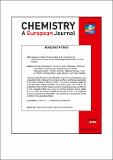Files in this item
Influence of filler pore structure and polymer on the performance of MOF-based mixed matrix membranes for CO2 capture
Item metadata
| dc.contributor.author | Sabetghadam, Anahid | |
| dc.contributor.author | Liu, Xinlei | |
| dc.contributor.author | Benzaqui, Marvin | |
| dc.contributor.author | Gkaniatsou, Effrosyni | |
| dc.contributor.author | Orsi, Angelica | |
| dc.contributor.author | Lozinska, Magdalena M. | |
| dc.contributor.author | Sicard, Clemence | |
| dc.contributor.author | Johnson, Timothy | |
| dc.contributor.author | Steunou, Nathalie | |
| dc.contributor.author | Wright, Paul A. | |
| dc.contributor.author | Serre, Christian | |
| dc.contributor.author | Gascon, Jorge | |
| dc.contributor.author | Kapteijn, Freek | |
| dc.date.accessioned | 2019-05-13T23:37:55Z | |
| dc.date.available | 2019-05-13T23:37:55Z | |
| dc.date.issued | 2018-06-04 | |
| dc.identifier | 252637838 | |
| dc.identifier | f433bc12-e25e-4b5d-b239-79d9be3f7361 | |
| dc.identifier | 85047390474 | |
| dc.identifier | 000434216600021 | |
| dc.identifier.citation | Sabetghadam , A , Liu , X , Benzaqui , M , Gkaniatsou , E , Orsi , A , Lozinska , M M , Sicard , C , Johnson , T , Steunou , N , Wright , P A , Serre , C , Gascon , J & Kapteijn , F 2018 , ' Influence of filler pore structure and polymer on the performance of MOF-based mixed matrix membranes for CO 2 capture ' , Chemistry - A European Journal , vol. 24 , no. 31 , pp. 7949-7956 . https://doi.org/10.1002/chem.201800253 | en |
| dc.identifier.issn | 0947-6539 | |
| dc.identifier.other | crossref: 10.1002/chem.201800253 | |
| dc.identifier.other | ORCID: /0000-0002-4243-9957/work/62668285 | |
| dc.identifier.uri | https://hdl.handle.net/10023/17694 | |
| dc.description | Financial support of the European Research Council under the European Union’s Seventh Framework Programme (FP/2007-2013), M4CO2 project (608490) is gratefully acknowledged. | en |
| dc.description.abstract | To gain insight into the influence of metal–organic framework (MOF) fillers and polymers on membrane performance, eight different composites were studied by combining four MOFs and two polymers. MOF materials (NH2‐MIL‐53(Al), MIL‐69(Al), MIL‐96(Al) and ZIF‐94) with various chemical functionalities, topologies, and dimensionalities of porosity were employed as fillers, and two typical polymers with different permeability‐selectivity properties (6FDA‐DAM and Pebax) were selected as matrices. The best‐performing MOF–polymer composites were prepared by loading 25 wt % of MIL‐96(Al) as filler, which improved the permeability and selectivity of 6FDA‐DAM to 32 and 10 %, while for Pebax they were enhanced to 25 and 18 %, respectively. The observed differences in membrane performance in the separation of CO2 from N2 are explained on the basis of gas solubility, diffusivity properties, and compatibility between the filler and polymer phases. | |
| dc.format.extent | 8 | |
| dc.format.extent | 2366089 | |
| dc.language.iso | eng | |
| dc.relation.ispartof | Chemistry - A European Journal | en |
| dc.subject | Metal-organic framework | en |
| dc.subject | Membranes | en |
| dc.subject | Gas separation | en |
| dc.subject | Polymers | en |
| dc.subject | Pore structure | en |
| dc.subject | Composite materials | en |
| dc.subject | QD Chemistry | en |
| dc.subject | NDAS | en |
| dc.subject.lcc | QD | en |
| dc.title | Influence of filler pore structure and polymer on the performance of MOF-based mixed matrix membranes for CO2 capture | en |
| dc.type | Journal article | en |
| dc.contributor.sponsor | European Commission | en |
| dc.contributor.institution | University of St Andrews. School of Chemistry | en |
| dc.contributor.institution | University of St Andrews. EaSTCHEM | en |
| dc.identifier.doi | https://doi.org/10.1002/chem.201800253 | |
| dc.description.status | Peer reviewed | en |
| dc.date.embargoedUntil | 2019-05-14 | |
| dc.identifier.grantnumber | 608490 | en |
This item appears in the following Collection(s)
Items in the St Andrews Research Repository are protected by copyright, with all rights reserved, unless otherwise indicated.

